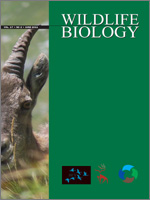We need to monitor wildlife populations to determine whether management goals are achieved and to improve future decisions. Therefore, it is important to evaluate the cost and accuracy of monitoring strategies in the context of management. Using a computer simulation of a harvested population, we tested the relative performance of three survey methods: aerial survey, pellet-group counts and hunters' observations, to inform about the management of Swedish moose Alces alces populations. Where more than one survey method was used in a single year, we used Bayes' theorem to combine information and estimate population size. We used two measures of performance: the fraction of time in which the population had an ‘undesirable’ size and inter-annual variation in harvest. Furthermore, we traded these performance measures against their cost. An annual aerial survey was the most costly monitoring method (27,000€) and maintained the population within the desired range 72% of the time. The least expensive monitoring strategy (hunters' observations; 1,600€) maintained the population within a desired range of 66% of the time. A combination of two relatively inexpensive survey methods (i.e. pellet-group counts and hunters' observations; at an expense of 10,000€) maintained the population within the desired range in 76% of the simulated years. Thus, a combination of annual pellet-group counts and hunters' observations performed better than annual aerial surveys, but was considerably less expensive. Furthermore, the annual combination of pellet-group counts and hunters' observations also performed best regarding the inter-annual harvest variation. Management actions only maintained the population within the desired range 81% of the time, even when population size was observed without error, mainly due to variable net growth rates. In wildlife management systems, where a variety of monitoring methods are used, the overall performance generally improves with monitoring expenditure, but very few studies explicitly account for expenditure. However, our study shows that combinations of inexpensive methods can reduce monitoring costs substantially while yielding an equal or an increased performance.
How to translate text using browser tools
1 June 2011
Survey method choice for wildlife management: the case of moose Alces alces in Sweden
Johan Månsson,
Cindy E. Hauser,
Henrik Andrén,
Hugh P. Possingham

Wildlife Biology
Vol. 17 • No. 2
June 2011
Vol. 17 • No. 2
June 2011
aerial counts
Bayesian updating
direct observations
pellet-group counts
simulation
surveys
trade-off




